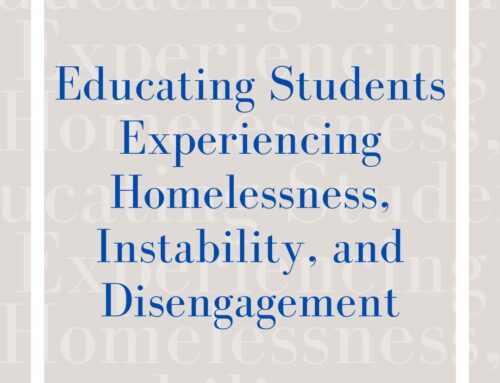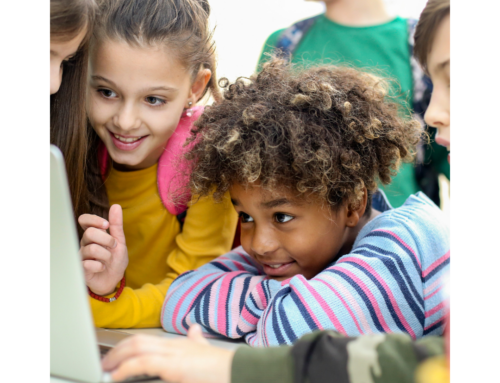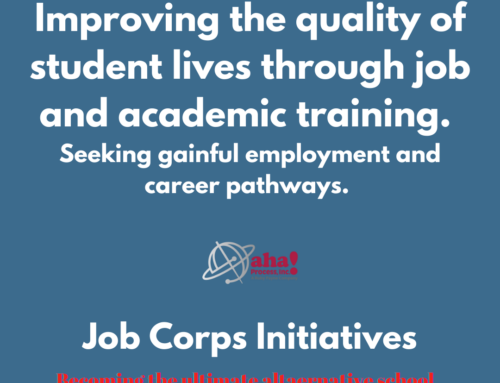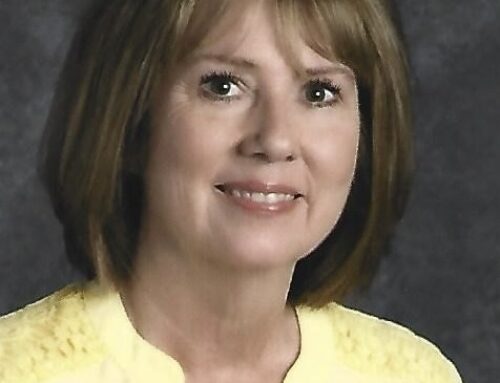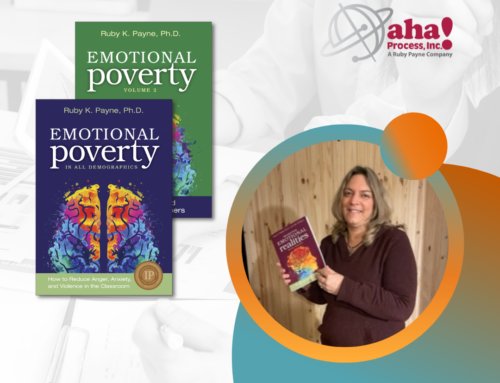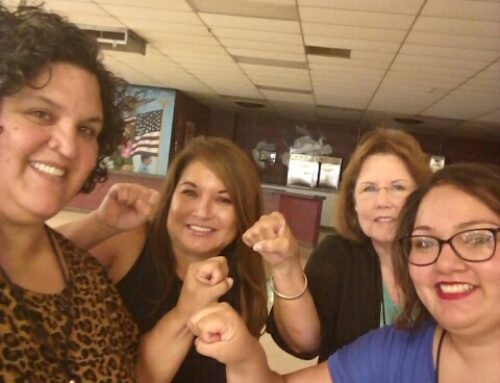by Ruby K. Payne, Ph.D.
In last week’s blog we went over five ways for schools to make a difference in the lives of students from poverty. Listed below are another five strategies to build better understanding the impact of poverty on education and thereby improve student achievement.
6. RELATIONSHIPS OF MUTUAL RESPECT
Because learning is always double-coded (Greenspan & Benderly, 1997)—both cognitively (based on the content) and emotionally (based on the relationship)—relationships enhance or detract from learning. Goleman (2006), in his book Social Intelligence, reports the findings of a study of 910 first-graders, all of whom had teachers with excellent pedagogy. However, if the at-risk students perceived the teacher as cold and controlling, the students essentially refused to learn from that teacher. Schools can establish relationships of mutual respect with students and monitor for that through observation and student surveys. These are critical to learning.
 7. DIFFERENCES BETWEEN SCHOOL RULES AND RULES OUTSIDE SCHOOL
7. DIFFERENCES BETWEEN SCHOOL RULES AND RULES OUTSIDE SCHOOL
Different environments require different responses. In the book A Framework for Understanding Poverty (Payne, 2013), these responses are referred to as “hidden rules.” Because the worlds of work and school tend to use the same rules, if a student does not know the rules of school, then we teach those rules to that student. We use this analogy: Do you use the same rules in basketball that you do in football? The answer is no because you would lose. Different rules do not make one set better than another; they are just different. For example, if you are going to survive in a generational poverty neighborhood, you must know how to physically fight. But if you bring fighting into school, you are suspended or expelled. Schools should teach the hidden rules of school to students so they also can negotiate the environments of school and work.
8. CHAOTIC, UNSAFE LEARNING ENVIRONMENT
Research on allostatic load indicates that the more chaotic (and dangerous) the environment, the less capable working memory is in the brain (McEwen, 2000). The more unstable the environment, the less learning occurs because time is given to surviving the current crisis, as opposed to devoting time to learning. For brains to function well, schools must provide a strong classroom management approach, clear guidelines for behaviors, and a sense of safety, as well as teach two sets of rules and have relationships of mutual respect.
9. STAFF MOBILITY/STUDENT MOBILITY
High-poverty schools have high staff mobility and high student mobility. One of the characteristics of generational poverty is the amount of instability it brings to situations. In this case, the instability and insecurity occur both at home and at school. To combat high staff mobility, some school districts are offering a 5% additional pay differential to keep staff stable. To combat high student mobility, it is imperative that schools use a formative assessment for students and immediately provide interventions and safety nets for those students. See Payne (2008).
10. REALITIES OF GENERATIONAL POVERTY
There are many realities in generational poverty that impact children: gangs, violence, poor or no healthcare and dental care, substandard housing, greater environmental pollution, drugs, etc. While middle class may have some of these, generational poverty has a disproportionate amount—and at the same time there are fewer resources to address them. Schools can provide access to community agencies that can also help students address these issues. See the book Collaboration for Kids (Conway, 2006), which provides a process.
CONCLUSION
While schools certainly cannot mitigate all the issues in poverty, schools can provide for many students from poverty the key tools to begin making the transition out of poverty, should those students wish to do so. Those tools include education, relationships with individuals different from oneself, and eventual employment. Such tools impact not just the generation being taught, but the students’ children and their grandchildren as well. Education is a gift for life.
References
Conway, H. W. (2006). Collaboration for kids: Early intervention tools for schools and communities. Highlands, TX: aha! Process.
Goleman, D. (2006). Social intelligence: The new science of human relationships. New York, NY: Bantam.
Greenspan, S. I., & Benderly, B. L. (1997). The growth of the mind and the endangered origins of intelligence. Reading, MA: Addison-Wesley.
McEwen, B. S. (2000). Allostasis and allostatic load: Implications for neuropsychopharmacology. Neuropsychopharmacology, 22(2), 108–24.
Payne, R. K. (2008). Under-resourced learners: 8 strategies to boost student achievement. Highlands, TX: aha! Process.
Payne, R. K. (2013). A framework for understanding poverty (6th rev. ed.). Highlands, TX: aha! Process.
Copyright 2013 by aha! Process, Inc. All rights reserved. www.ahaprocess.com

